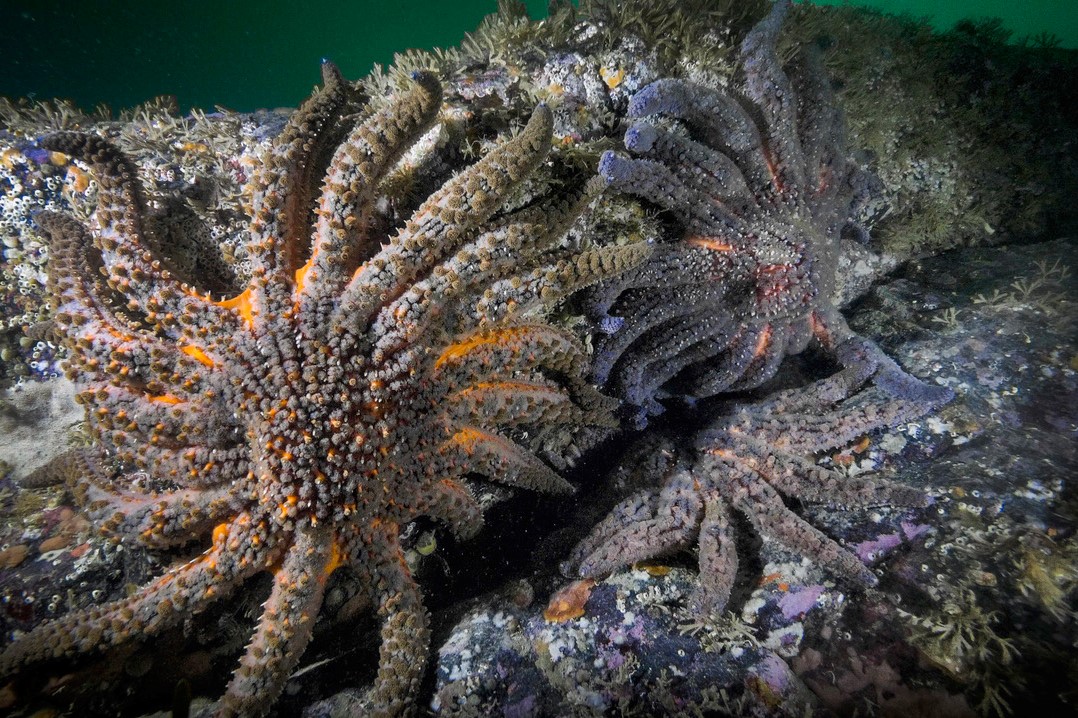Critically Endangered Sunflower Sea Stars Seek Refuge in B.C. Fjords
The sunflower sea star, a once-thriving marine species along the Pacific Coast, is now critically endangered and seeking sanctuary in the remote fjords of British Columbia. Marine biologists have observed that these deep, cold-water environments may be one of the last remaining refuges for the species, which has faced a dramatic population collapse due to climate change, disease, and habitat destruction.
Sunflower Sea Stars on the Brink of Extinction
Once a keystone predator in Pacific marine ecosystems, the sunflower sea star (Pycnopodia helianthoides) has seen its population decline by more than 90% in some regions. This sharp drop is largely attributed to a devastating outbreak of sea star wasting disease, a condition that causes rapid tissue decay and has been exacerbated by rising ocean temperatures.
According to marine researchers, the disease wiped out millions of sunflower sea stars from California to Alaska over the past decade. As a result, the species was officially classified as critically endangered by the International Union for Conservation of Nature (IUCN), raising concerns about its role in maintaining ecological balance.
B.C. Fjords: A Potential Safe Haven
Recent studies indicate that the fjords of British Columbia, with their colder and more stable water temperatures, could provide a vital refuge for the species. These deep, narrow inlets offer a unique ecosystem that may help slow the spread of sea star wasting disease and provide a suitable environment for potential population recovery.
Conservationists and marine scientists are now focusing on these fjords as critical research sites. Efforts are underway to study surviving populations, assess genetic diversity, and explore possible restoration strategies, including captive breeding and reintroduction programs.
The Ecological Importance of Sunflower Sea Stars
Sunflower sea stars play a crucial role in maintaining the health of marine ecosystems, particularly in controlling populations of sea urchins. With the decline of these predators, sea urchin numbers have surged, leading to the overgrazing of kelp forests. This imbalance threatens biodiversity and disrupts habitats that support a variety of marine species.
Restoring sunflower sea star populations could help restore kelp forests, which act as vital carbon sinks and protect coastal environments from erosion. Scientists emphasize that preserving this species is not only essential for marine biodiversity but also for mitigating the broader effects of climate change.
Conservation Efforts and Future Outlook
Organizations such as the Nature Conservancy and the University of Washington’s Friday Harbor Labs are collaborating on research and conservation initiatives aimed at protecting sunflower sea stars. These efforts include monitoring populations in B.C. fjords, studying disease resistance, and developing strategies for reintroducing the species to its historical range.
With ongoing climate pressures and environmental changes, the fate of the sunflower sea star remains uncertain. However, the discovery of potential refuges in B.C. offers a glimmer of hope for the species’ survival. Conservationists are urging governments, research institutions, and the public to support marine protection initiatives to safeguard this vital predator and its ecosystem.
Source : The Canadian Press


